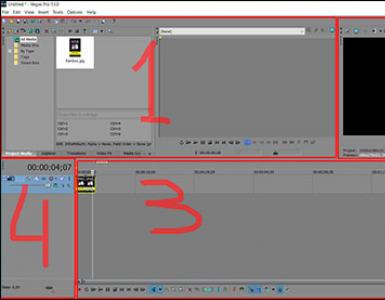Checkbox html значение по умолчанию. Стилизация чекбоксов и радиокнопок на чистом CSS с совместимостью для старых браузеров
Это руководство познакомит вас с флажками (checkbox) HTML и научит обращаться с ними в PHP .
Форма из одного флажка
Давайте создадим простою форму с одним флажком (checkbox).
В PHP скрипте (файл checkbox-form.php) возможно прочитать значение поля посредством массива $_POST . Если $_POST["formWheelchair"] присвоено значение YES, то флажок в был выбран. Если флажок не выбран, то переменная $_POST["formWheelchair"] не установлена.
Вот пример обработки формы на PHP:
Переменной $_POST["formWheelchair"] присвоено значение YES, так как значение атрибута value тега input равно «YES» .
Пожалуйста отметьте, что все флажки имеют одно имя (formDoor). Одно имя говорит о том, что все флажки связаны между собой. Квадратные скобки указывают на то, что все значения будут доступны из одного массива. То есть $_POST["formDoor"] не вернет строку, как в примере выше, вместо нее возвратится массив, содержащий значения флажков, которые были выбраны пользователем.
Например, если я отмечу все флажки, $_POST["formDoor"] вернет массив из {A,B,C,D,E} . В примере ниже мы получаем и отображаем все значения массива.
Функция empty пригодится на тот случай, если пользователь ничего не выбрал. Если же массив не пустой, подсчитываем количество выбранных флажков при помощи функции count и выводим все значения при помощи цикла for .
Если выбран флажок "Acorn Building", то массив будет содержать значение "A".
Проверяем, выбран ли конкретный флажок
Часто требуется проверить: выбран ли конкретный флажок. Для этого можно использовать следующую функцию:
Function IsChecked($chkname,$value) { if(!empty($_POST[$chkname])) { foreach($_POST[$chkname] as $chkval) { if($chkval == $value) { return true; } } } return false; }
Теперь достаточно просто вызвать функцию IsChecked (chkboxname,значение). Например:
If(IsChecked("formDoor","A")) { //do ... }
Note: Unlike other input controls, a checkboxes value is only included in the submitted data if the checkbox is currently checked . If it is, then the value of the checkbox"s value attribute is reported as the input"s value.
Using checkbox inputs
We already covered the most basic use of checkboxes above. Let"s now look at the other common checkbox-related features and techniques you"ll need.
Handling multiple checkboxes
The example we saw above only contained one checkbox; in real-world situations you"ll be likely to encounter multiple checkboxes. If they are completely unrelated, then you can just deal with them all separately, as shown above. However, if they"re all related, things are not quite so simple.
For example, in the following demo we include multiple checkboxes to allow the user to select their interests (see the full version in the section).
In this example you will see that we"ve given each checkbox the same name (note the brackets at the end of the name, which allows the values to be sent as an array). If both checkboxes are checked and then the form is submitted, you"ll get a string of name/value pairs submitted like this: interest=coding&interest=music . When this data reaches the server-side, you should be able to capture it as an array of related values and deal with it appropriately - see Handle Multiple Checkboxes with a Single Serverside Variable , for example.
Checking boxes by default
To make a checkbox checked by default, you simply give it the checked attribute. See the below example:
Providing a bigger hit area for your checkboxes
In the above examples, you may have noticed that you can toggle a checkbox by clicking on its associated element represents a caption for an item in a user interface.">
Beyond accessibility, this is another good reason to properly set up
Indeterminate state checkboxes
In addition to the checked and unchecked states, there is a third state a checkbox can be in: indeterminate . This is a state in which it"s impossible to say whether the item is toggled on or off. This is set using the elements."> HTMLInputElement object"s indeterminate property via JavaScript (it cannot be set using an HTML attribute):
InputInstance.indeterminate = true;
A checkbox in the indeterminate state has a horizontal line in the box (it looks somewhat like a hyphen or minus sign) instead of a check/tick in most browsers.
There are not many use cases for this property. The most common is when a checkbox is available that "owns" a number of sub-options (which are also checkboxes). If all of the sub-options are checked, the owning checkbox is also checked, and if they"re all unchecked, the owning checkbox is unchecked. If any one or more of the sub-options have a different state than the others, the owning checkbox is in the indeterminate state.
Examples
The following example is an extended version of the "multiple checkboxes" example we saw above - it has more standard options, plus an "other" checkbox that when checked causes a text field to appear to enter a value for the "other" option. This is achieved with a simple block of JavaScript. The example also includes some CSS to improve the styling.
HTML
CSS
html { font-family: sans-serif; } form { width: 600px; margin: 0 auto; } div { margin-bottom: 10px; } fieldset { background: cyan; border: 5px solid blue; } legend { padding: 10px; background: blue; color: cyan; }JavaScript
var otherCheckbox = document.querySelector("input"); var otherText = document.querySelector("input"); otherText.style.visibility = "hidden"; otherCheckbox.onchange = function() { if(otherCheckbox.checked) { otherText.style.visibility = "visible"; otherText.value = ""; } else { otherText.style.visibility = "hidden"; } };Specifications
| Specification | Status | Comment |
|---|---|---|
| HTML Living Standard The definition of "" in that specification. |
Living Standard | |
| HTML5 The definition of "" in that specification. |
Recommendation |
Browser compatibility
The compatibility table on this page is generated from structured data. If you"d like to contribute to the data, please check out
Legend
Full support Full support Compatibility unknown Compatibility unknownSee also
- element is used to create interactive controls for web-based forms in order to accept data from the user; a wide variety of types of input data and control widgets are available, depending on the device and user agent."> and the elements."> HTMLInputElement interface which implements it.
- The ), checkbox (), or option (
Все разработчики сайтов, веб-приложений и десктопных программ знают, что такое чекбоксы. Но те люди, которые далеки от программирования, встречая такое непонятное иностранное слово, не понимают, о чем идет речь. На самом деле все очень просто. Чекбоксы - это одни из простейших элементов управления при создании форм.
Обычная галочка
Все люди встречались в жизни с такими символами, как галочка, начиная еще со школьной скамьи. При проведении тестирования нужно отмечать правильный вариант этим знаком. Затем при заполнении различных анкет. Ну а в нынешнее время, когда пользователи совершают через Интернет множество действий, без галочек вообще никуда. Даже простейшая регистрация на каком-либо сайте требует отметить некоторые пункты (увлечения, навыки).
Также сейчас развита интернет-торговля. При создании заказа пользователь отмечает интересующие его пункты. А еще часто при установке компьютерной игры предлагается выбрать дополнительное программное обеспечение. И тут тоже нужно сделать выбор. Так вот, чекбоксы - это те самые галочки, которые используются на веб-страницах.
В создании сайтов

Разработчики сайтов видят этот элемент несколько шире. Ведь создать сложнее, чем просто один раз кликнуть мышкой на квадратике и поставить галочку. Сайты разрабатываются при помощи гипертекстового языка разметки, который в профессиональной среде называют всего четырьмя буквами - HTML. И чтобы в нем создать галочку, необходимо написать определенный код.
Как же создаются чекбоксы? HTML имеет специализированный элемент (тег), который является полем, наделенным типом «чекбокс», который пишется следующим образом: .
Принципы функционирования

Работает такой элемент по простейшему принципу: либо утверждение, либо отрицание. Если в поле отмечена галочка, то веб-браузер отправляет переменную, которая отправит имя поля на сервер для обработки, если же галочка не отмечена, то сервер ничего не получает. У элемента есть необязательный атрибут со значением value, но он является необязательным.
Иногда бывает так, что на странице некоторые галочки уже стоят отмеченными. Для этого разработчики добавляют к тегу специальный атрибут, который указывает на уже поставленную по умолчанию галочку. Это атрибут checked, то есть «отмечено».
Чекбоксы - это такие элементы, которые подразумевают не единичный выбор из нескольких вариантов, а отметку всех подходящих. Для разработчика это имеет значение, потому что если одна форма содержит несколько чекбоксов, их имена должны быть отличными друг от друга.
Зависимые чекбоксы
В случае, когда нужно выбирать лишь один вариант из множества, используются другие элементы - радиокнопки, а не флажки. Но иногда применяется такой тип, как зависимые чекбоксы. HTML совместно с языком программирования JavaScript позволяет сделать один главный флажок, от которого зависят другие. При нажатии на него могут быть отмечены сразу несколько чекбоксов. Такое используется редко, так как это несколько противоречит самому правилу отметки галочек.
Как и все теги в HTML, чекбоксы - это такие элементы, которые имеют свои признаки. Какими они бывают? Выше уже был упомянут атрибут для предварительной отметки флажка - checked. Так как в одной форме у чекбоксов должны быть различные имена, нужен атрибут name. Он как раз идентифицирует каждый отдельный флажок. Для того, чтобы задать значение, которое будет отправляться на сервер, используют атрибут value.
Стоит отметить, что чекбоксы - это графические элементы управления, которые используются преимущественно в формах. И работают они в тремх режимах: не выбранный, выбранный и неопределенный.
Применение в таблицах

Чекбокс применяется не только в HTML при разработке сайтов и веб-приложений. Такое программное обеспечение, как 1С, тоже использует данный элемент. Ведь на предприятии есть множество разных составляющих и при работе с документацией все это необходимо отмечать. К примеру, при помощи чекбокса можно отметить список складских запасов или клиентов, которым нужно отправить товар.
В каких еще программах применяется данный элемент? Excel - все знают эту программу для составления таблиц от компании Microsoft, которая часто является Принцип работы флажка здесь таков: если галочка отмечена, то элемент возвращает истинное значение, если снята - ложное. Чтобы вставить чекбокс в документ, нужно включить специальную вкладку для разработчика. Делается это через параметры, которые в каждой версии Excel немного отличаются.
Как найти нужные настройки? Всегда есть справка или поисковая система. После того, как вкладка включена, можно вставлять элемент через команду «Вставить» пункта «Элементы управления». Здесь нужно обратить внимание на то, что это меню также содержит элементы ActiveX, расположенные под необходимыми элементами формы. Там тоже имеются чекбоксы. В чем между ними разница? Для использования элементов ActiveX нужен встроенный язык программирования VBA, который знают немногие. А обыкновенные флажки можно сразу привязать к определенной ячейке в документе.
После того, как чекбоксы в Excel будут вставлены, они по умолчанию становятся отмеченными. При нажатии мышью в любом месте документа отметка снимается. Для обратного выделения нужно кликнуть на флажок правой кнопкой мышки, так как левая кнопка снимает или устанавливает галочку.
При наведении курсора на флажок, зажатии и удерживании левой кнопки можно переместить элемент в любое место на документе. Также это удобно делать клавишами на клавиатуре. При наведении курсора на углы элемента можно растянуть его до большего размера или уменьшить. Специальные настройки позволяют оформить флажок, изменив его цвет, фон, рамку.
Вывод

Итак, как видно из вышесказанного, чекбоксы - это не сложный элемент графического интерфейса, а то, с чем все сталкиваются в повседневной жизни - обыкновенная галочка. Понятие немного отличается для программиста и рядового пользователя, но суть одинакова: это элемент управления, который дает возможность сделать множественный выбор при заполнении какой-либо формы. Важно не перепутать чекбоксы с радиокнопками, которые дают возможность выбрать лишь один пункт из множества.
Благодаря CSS3, мы можем добиться практически любого нужного нам на экране эффекта. В этом уроке рассмотрим, каким образом можем стилизовать чекбоксы и радио кнопки.
Input:checked + label:before { content: "\2022"; color: #f3f3f3; font-size: 30px; text-align: center; line-height: 18px; }
Теперь когда мы нажмём на радио кнопку, в основном сером круге должен появиться маленький белый кружок.

Стилизуем чекбоксы
Теперь давайте займёмся оформление чекбоксов. Для начала снова спрячем элемент:
Input { display: none; }
Поскольку мы убираем стандартное отображение чекбокса при помощи псевдо-элемента:before, просто добавим рамку:
Checkbox label:before { border-radius: 3px; }
Затем добавим символ “галочка”, который появится при клике по чекбоксу. Сделаем это по аналогии с радиокругом. На этот раз нам понадобится преобразовать HTML символ? ✓.
Input:checked + label:before { content: "\2713"; text-shadow: 1px 1px 1px rgba(0, 0, 0, .2); font-size: 15px; color: #f3f3f3; text-align: center; line-height: 15px; }
В итоге, вот что у нас должно получиться:

Итоги
В этом уроке мы рассмотрели способ, который вы можете использовать для нужного вам отображения радио кнопок и чекбоксов. Поскольку мы использовали CSS3, то данная техника будет работать только в браузерах, которые поддерживают эту технологию. Для того чтобы добиться подобных результатов в более старых браузерах, можете воспользоваться соответствующим
Сегодня я покажу вам классный прием, который позволит создавать классные чекбоксы, гораздо более красивые, чем те, что предлагает html по умолчанию. Я покажу, как делается в css оформление checkbox -ов. Иными словами, я покажу вам, как сделать на css красивые чекбоксы (checkbox), то есть галочки.
Начальная разметка
Итак, начать нужно с того, чтобы добавить в html код, который выведет наши чекбоксы, а также подписи к ним (label), эти поля нужно связать между собой, чтобы при клике на label можно было устанавливать галочку в поле.
Так, я немного прокомментирую. У нас есть три пары: поле checkbox и подпись к нему. Каждое поле получает свой идентификатор, связка с лейблом происходит с помощью атрибута for , где прописывается имя идентификатора, с которым нужно связать. Пока на странице все выглядит так, то есть это обычный внешний вид чекбоксов. Сейчас мы будем его изменять.
Убираем input, оформляем спаны
Итак, теперь нам надо скрыть со страницы обычные чекбоксы.
Input { display:none; }
Теперь нужно как-то оформить новые поля. Оформлять мы будем элементы span, так как они находятся внутри label .
Input + label span{ display:inline-block; width:40px; margin-right: 10px; height:40px; vertical-align:middle; border: 5px solid green; cursor:pointer; border-radius: 5px; }
Этим селектором мы выбрали все спаны в лейблах, которые находятся в коде сразу за input ами с типом checkbox . Таким образом, оформление применится к нашим спанам. Мы даем им блочно-строчный тип, определенную ширину и высоту, отступ справа, чтобы текст не прилегал вплотную.

Делаем так, чтобы все заработало
Теперь нужно сделать так, чтобы при клике внутри спана, то есть при выборе какого-то варианта, в него автоматом ставилась галочка. Для этого я для начала нашел в интернете соответствующую иконку с галочкой (она должна быть в формате png), уменьшил ее до размеров нашего поля. Теперь остается вставить такой код:
Input:checked + label span{ background:url(btn.png) no-repeat; }

Все, теперь работает! Попробуйте пощелкать и вы увидите, что при выборе появляется красивая галочка. Моя картинка лежала в той же папке, что и файл css и называлась btn.png , отсюда и такая запись.
Ну а что же делает наш волшебный селектор input:checked + label span ? По сути, он приказывает браузеру следующее: когда любой из чекбоксов будет отмечен, примени для спанов в лейблах фоновую картинку. Вот так вот все просто, мы обошлись без скриптов, сделав красивые чекбоксы на чистом css. Пишите в комментарии, если что-то непонятно.













